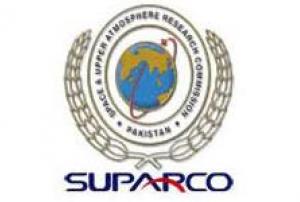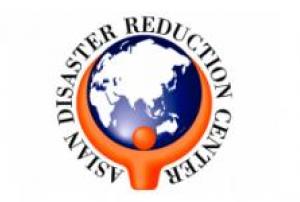Tremblement de terre
Definition
Facts and figures
Further information
UN-SPIDER Regional Support Offices with hazard-specific expertise
Related content on the Knowledge Portal
The Space and Upper Atmosphere Research Commission (SUPARCO) of Pakistan and the United Nations Office of Outer space Affairs (UNOOSA) signed the cooperation agreement on the establishment of a UN-SPIDER Regional Support Office (RSO) on the occasion of the 47th Scientific and Technical Subcommittee sessions on 12 February 2010.
SUPARCO, the national space agency, was established in 1961 as a Committee and was granted the status of a Commission in 1981. SUPARCO is mandated to conduct R&D in space science, space technology, and their peaceful applications in the country. It works towards developing indigenous capabilities in space technology and promoting space applications for socio-economic uplift of the country.
Address:
Pakistan Space and Upper Atmosphere Research Commission (SUPARCO)
Islamabad Highway,
Islamabad-44000 PakistanMission/Objective:
To…
read moreThe Asia Disaster Reduction Center (ADRC) and the United Nations Office of Outer Space Affairs (UNOOSA) signed the cooperation agreement on establishment of the ADRC UN-SPIDER Regional Support Office (RSO) on the occasion of the 52nd session of the Committee on the Peaceful Uses of Outer Space (COPUOS) on 4th June 2009.
A strong earthquake with magnitude 6.5 struck the city of Bam in the southeast Iran on December 26, 2003. The earthquake brought massive destruction to the city and its surrounding rural areas. The earthquake caused the deaths of approximately more than 26,000 residents and injured about 30,000. QuickBird captured a clear image of Bam on January 3, 2004, eight days after the event. The city was also observed by QuickBird on September 30, 2003, about three months before the event. In this paper, using the pre-event image, the location of individual buildings was registered on GIS and the city blocks surrounded by major roads were assigned.
read more
Then, the visual damage inspection of buildings based on the European Macroseismic Scale was carried out building by building, comparing the pre-event and post-event images. The result of the damage inspection was compared with field survey data, and the accuracy and usefulness of the high-resolution satellite images in damage…The damaged areas of the 2003 Bam, Iran, earthquake were detected using 15-meter-resolution satellite imagery acquired by Terra-ASTER. First, fluctuation of digital numbers was modeled as a normal random variable based on 17 pre-event images on a pixel-by-pixel basis. Then, the deviation value of each digital number in the post-event image was evaluated and converted into the confidence level, which indicates the possibility of an abnormal groundsurface change. The detected damaged areas were verified with a highresolution satellite image and it was observed that the areas with earthquake influence were mostly identified. However, the pixels with significant change were induced not only from heavily damaged buildings but also dusty roads, possibly due to demolition work. It was suggested that prior knowledge like a high-resolution pre-event image would assist the interpretation of the detected result.
read moreThe coherence analysis of synthetic aperture radar (SAR) onboard a satellite was applied to detect earthquake damage distribution. We investigated the microwave scattering characteristics of areas damaged by the 1995 Kobe earthquake using satellite JERS-1/SAR images whose swath width and spatial resolution are approximately 100km and 30m, respectively. According to the difference in backscattered intensity and coherence from interferometric analysis of SAR images taken at different times, we found that the characteristics of backscattering property of damaged areas showed significant variations. Therefore, the images obtained by remote sensing SAR can be a powerful tool for post-disaster management. Finally, we introduce a recent airborne SAR system which provides 1.5m high-resolution images based on interferometry and full-polarimetry and present an example.
read moreRadar satellite imagery was valuable in supporting extensive rescue operations after the Wenchuan Earthquake on 12 May 2008 due to its ability to operate independently of weather conditions, day and night. However, it is a challenging task to identify damaged or destroyed buildings using synthetic aperture radar (SAR) data. The standard procedure for identifying damaged buildings is to use change detection by comparing post-seismic to pre-seismic images, but almost no archived high-resolution SAR images were available of the rather remote area damaged by the Wenchuan Earthquake. Building-damage assessment using only post-event SAR images was therefore necessary to assess the areas of damage. In this paper, theoretical assumptions about the appearance of collapsed buildings in high-resolution SAR images were drawn and verified with visual feature interpretations of real SAR images from the area.
read moreSynthetic aperture radar (SAR) is remarkable for its capability to record the backscattering coefficient, the physical value of the earth’s surface, regardless of weather condition or sun illumination. Therefore, SAR is a powerfultool that can be utilized to develop a universal method to comprehend damaged areas in disasters such as earthquakes, forest fires, and floods. We performed a feasibility study on backscattering characteristics of damaged areas in the 1995 Hyogoken-Nanbu (Kobe), Japan, earthquake using the preandpost-event ERS images, revealing that the backscattering coefficient and intensity correlation between the two attained values were significantly lowered in hard-hit areas. The evaluation, however, was performed without speckle noise reduction. We also investigated the effects of speckle noise reduction and pixel-window size in evaluating building damage using the difference in the backscattering coefficient and correlation coefficient of the pre…
read moreA strong earthquake occurred beneath the city of Bam, Iran, on 26 December 2003. High-resolution optical satellite images, such as Ikonos and QuickBird, obtained after the earthquake indicate that severely damaged areas were widely distributed in the city. A European radar satellite, Envisat, also captured the hard-hit areas on 07 January 2004. This paper introduces an automated damage detection technique that was developed based on the dataset of the 1995 Kobe, Japan, earthquake and applied to Envisat/ASAR imagesof Bam. A detailed investigation of the characteristics of the areas damaged due to the Bam earthquake in terms of the differences in the backscattering coefficient and the correlation coefficient of the pre- and post-event Envisat/ASAR images was conducted in order to raise the precision of damage detection. Finally, the damage-mapping scheme was revised to present the distribution of damaged areas in Bam.
read moreRemote sensing technology is playing an increasingly important role in post-disaster decision support. Organizations including the Earthquake Engineering Research Institute (EERI) and Multidisciplinary Center for Earthquake Engineering Research (MCEER) recognize that following major earthquakes, satellite imagery can bring significant benefits to response and recovery efforts, through urban damage assessment. Following an introductory review of prior research undertaken in the field, this paper presents methodological techniques for determining the location and severity of post-earthquake building damage. The damage detection algorithms are based on the comparative analysis of a multitemporal sequence of optical or SAR images, acquired before and after the event. Following initial pre-processing to geo-reference and co-register the imagery, damage is detected in terms of spectral changes between the scenes. Depending on its spatial resolution, image processing…
read moreRemote sensing technology is increasingly recognized as a valuablepost-earthquake damage assessment tool. Recent studies performed by research teams in the U.S., Japan and Europe have demonstrated that building damage sustained in urban environments can be readily identified through the analysis of optical (Matsuoka and Yamazaki, 1998; Chiroiu et al., 2002; Huyck et al., 2002; Mitomi et al., 2002; Yusuf et al., 2002; Shinozukaet al., 2000; Saito and Spence, 2004) and synthetic aperature radar (SAR) (Aoki et al., 1998, Huyck et al., 2002; Yusuf et al., 2002) imagery. Under the broad aim of identifying ways in which post-earthquake response and recovery activities can be improved through the integration of remote sensing technologies, a Multidisciplinary Center for Earthquake Engineering Research (MCEER) team has been investigating their use for urban damage detection and emergency response (Eguchi et al., 1999; Eguchi et al., 2000a, 2000b; Eguchi et al., 2003; Huyck and…
read more



